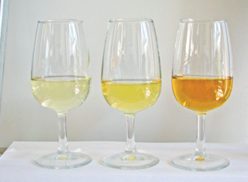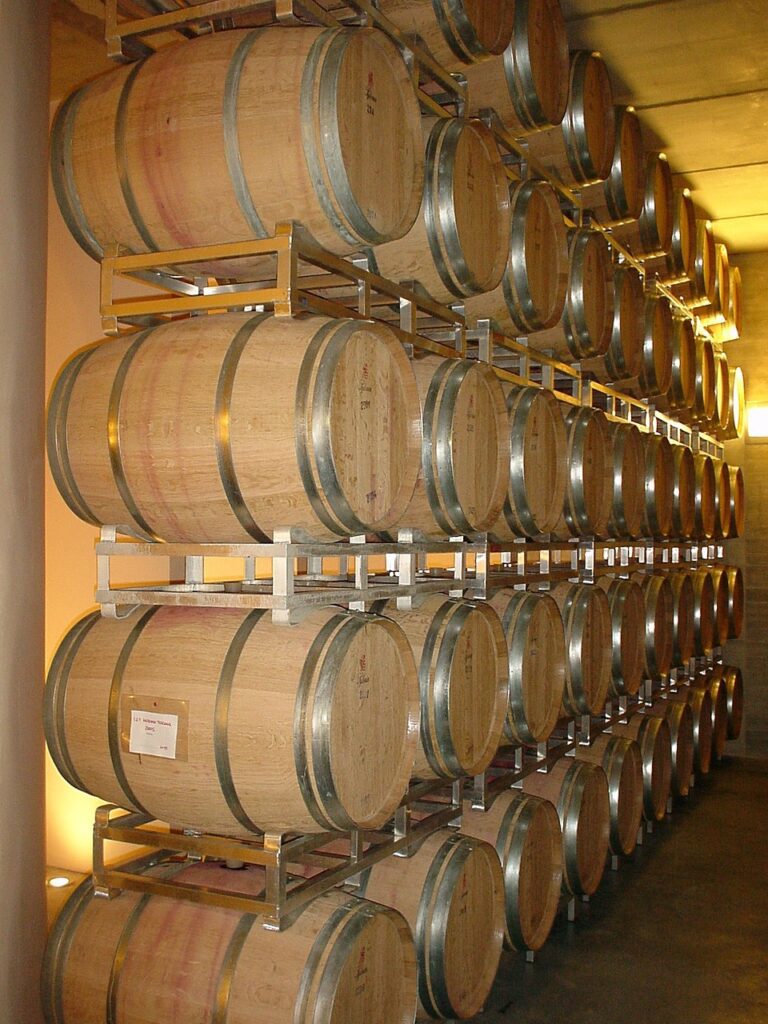
PHOTO 1. Excessive oxygen exposure causes the browning of white wines.
The first spontaneous reaction of winemakers, when air or oxygen during winemaking is discussed or mentioned, is its negative association with the oxidation or browning of wines. The correct oxygen control can, however, have various advantages and contribute positively to wine characteristics.
An analysis of faulty wines at the well-known International Wine Challenge in London showed that oxidation or reduction are the two most important sources of faults, which occurred the most in wines. It is the extremes of oxygen exposure, either too much or too little. The controlled exposure to oxygen can, however, prevent both problems. The following six ways of controlled oxygen exposure exist during winemaking:
- Hyper oxygenation is the planned browning of juice prior to fermentation by means of a high oxygen addition of 8 to 30 mg/ℓ over a few hours, in order to remove potential browning components from the juice.
- Macro oxygenation is the dosing of 8 mg/ℓ oxygen halfway during fermentation to ensure a smooth and complete fermentation. It is often added together with nitrogen yeast nutrients.
- First phase of micro oxygenation (MOX): It is applied after fermentation, but before SO2-addition over a period of two to six weeks to stabilise colour, add more body to the wine and improve the longevity of the wine. It is a continuous dosing of oxygen at 1 to 5 mg/ℓ daily and depends on the oxygen appetite of the wine. This is 20 to 100 more than the oxygen supplied by barrels. The dosing units are either expressed as mg/ℓ/month (30 to 150) or mℓ/ℓ/month (20 to 100).
- Second phase of micro oxygenation (MOX): It is continuously applied after malolactic fermentation (MLF) and SO2-addition over a period of four to 12 weeks to refine the wine structure, integrate aromatic compounds like pyrazines and oak flavours, soften wood tannins and limit reductive tendencies. Dosages vary from 3 to 12 mg/ℓ/month or 2 to 8 mℓ/ℓ/month.
- Third phase of micro oxygenation (MOX): It is continuously introduced after barrel maturation when the wine is one or two years old over a period of two to 12 weeks to harmonise wood tannins and limit reductive flavours before bottling. Typical dosages are 0.4 to 3.0 mg/ℓ/month or 0.25 to 2.0 mℓ/ℓ/month.
- Ciqueage: It is named after the noise made by the solenoid, when the remote control is pressed to liberate oxygen. It is the punctual introduction of oxygen during maturation at 1 to 2 mg/ℓ, which is equivalent to the oxygen uptake during rackings.
The monitoring of a micro oxygenation process (MOX) is usually done sensorially, because well-managed MOX does not lead to an increase of dissolved oxygen (DO) and DO-analysis is consequently not a good indicator. If an aldehyde character is observed in the processed wine, the MOX-dosage must be decreased and if reductive flavours are observed, the dosage must be increased.
The reductive status of wines can be increased by phenolic reactivity, aerobic micro-organisms like Acetobacter, yeast lees contact, minerality and certain cultivars.
The oxygen reactivity of wines can be determined by means of redox measurement, total oxygen uptake capacity or oxygen requirement. The latter is a new method, which determines the decrease of the DO-concentration in an oxygen saturated wine in a closed container. At constant temperature the rate of decrease is nearly linear. The addition of sulphur dioxide to the wine inhibits the potential oxygen absorption into the wine considerably.
Correct oxygen management which goes together with the applicable analysis is, like volatile acidity removal by means of reverse osmosis, a new technology, which can be used beneficially (Smith, 2017).

PHOTO 2. Micro oxygenation (MOX) is managed oxygen addition.
Reference
Smith, Clark, 2017. Issues and innovations in oxygen management. Wine Business Monthly, February 2017: 106 – 111.













